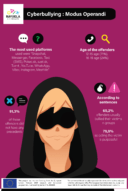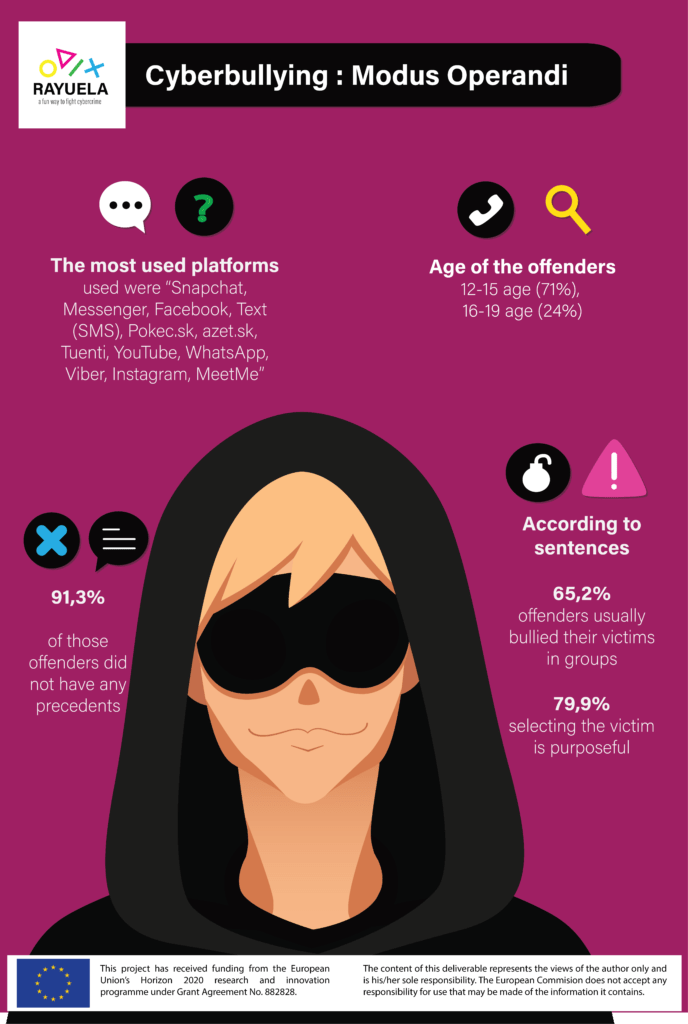Cyberbullying: Modus Operandi
Published:
Cyberbullying is a type of aggression that takes place intentionally through different technological devices, specifically through cell phones and the Internet (Slonje & Smith, 2008). Bullying, on the other hand, is an aggressive act carried out deliberately by one or more persons against a victim who is less able to protect himself/herself (Slonje & Smith, 2008).
Willard (2007) describes in detail seven behaviours that are involved in the dynamics of cyberbullying:
- Flaming – online “fights” using electronic messages with angry and vulgar language
- Harassment – repeatedly sending offensive, rude, and insulting messages
- Denigration
- Sending or posting cruel gossip or rumours about a person to damage his or her reputation or friendships
- “Dissing” someone online
- Impersonation – Breaking into someone’s account, posing as that person and sending messages to make the person look bad, get that person in trouble or danger, or damage that person’s reputation or friendships
- Outing and Trickery
- Sharing someone’s secrets or embarrassing information or images online
- Tricking someone into revealing secrets or embarrassing information, which is then shared
- Exclusion – Intentionally excluding someone from an online group, like a “buddy list”
- Cyberstalking
- Repeatedly sending messages that include threats of harm or are highly intimidating
- Engaging in other online activities that make a person afraid for her or her safety
- Use of technology, usually cell phones, to control a partner.

